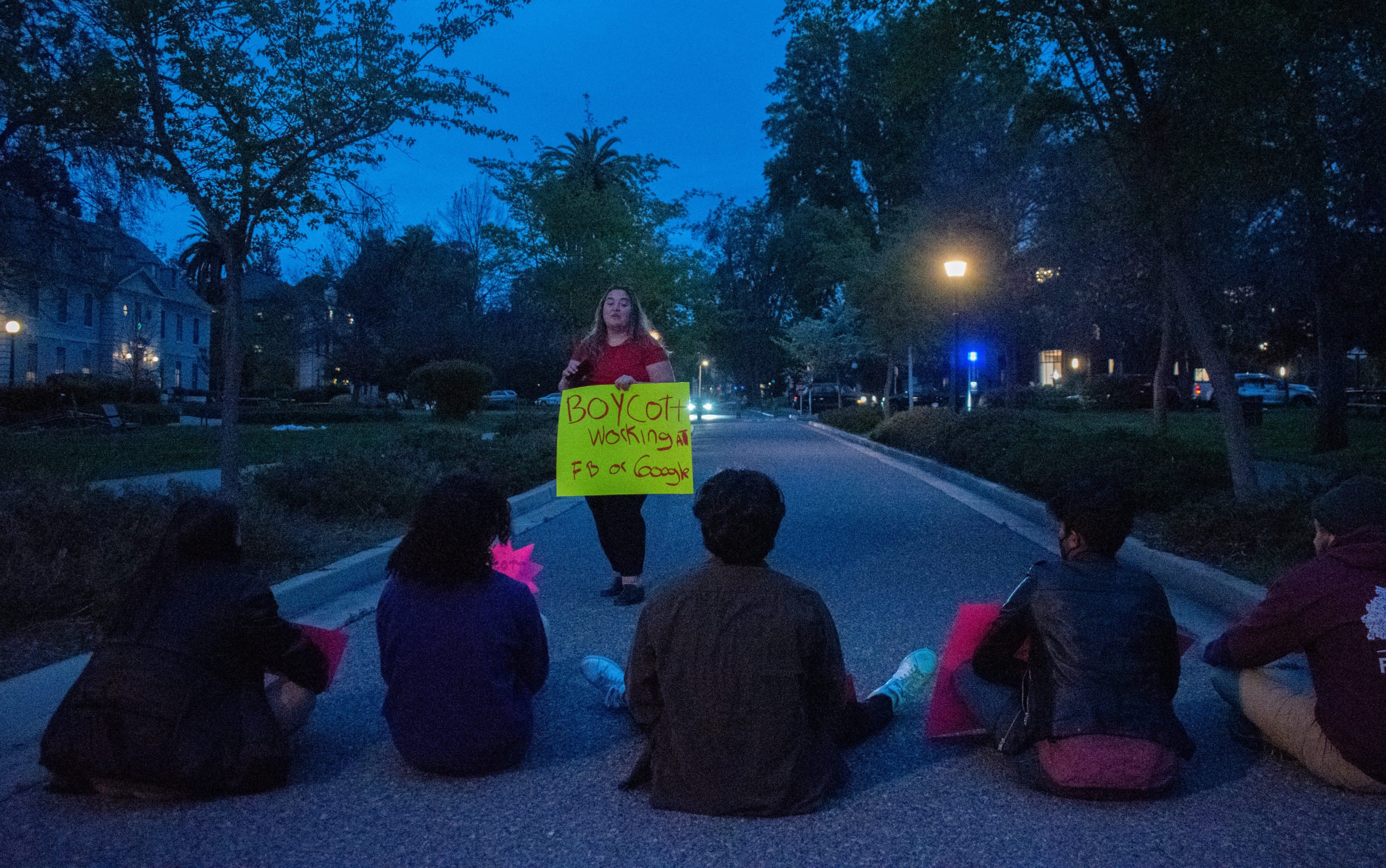More than a dozen student organizers met at the Columbae residence Wednesday evening to learn advocacy techniques from activist Melissa Byrne and coordinate upcoming efforts. The students plan to implement the strategies they learned in their advocacy for campus change, including calls for endowment divestment and boycotting working at Google and Facebook.
The students spoke with Byrne, who has worked on Sen. Bernie Sanders’ presidential campaigns and has organized a number of human and civil rights demonstrations, about direct action strategies and how to delegate responsibilities within groups of demonstrators,
The teach-in was hosted by Fossil Free Stanford and SumOfUs, a global consumer group aimed at holding large corporations accountable for their impacts on political, economic and environmental systems. Students gathered in Columbae’s lounge on the third day of the house’s “Fuck the System Week,” a weeklong series of activities and events geared toward social justice and activism and culminating in a “Fuck the Man” concert featuring artist Ivy Sole.
“Every year, we have a week that is geared toward art and activism and social justice themes, and we have events throughout the week,” said Christopher Rilling ’22, one of the organizers of the event. “The goals for today are, one, to learn techniques for direct action on campus for whatever social justice goal you have and, two, to meet other activists who are also interested in making change on campus.”
Students spoke with Byrne about the techniques and elements of direct action, from “viz” (visibility) to “bird-dogging” (questioning figures of authority on the record about the subject of demonstration). Byrne shared her experiences working to effect change, from protesting against the Iraq war in 2003 to organizing messaging on Stanford’s campus for students to boycott working at corporations in Silicon Valley like Facebook and Google.
“One campaign we’re working on now has to do with the way technology companies, especially Facebook and Google, aren’t being good corporate citizens, from how they let disinformation run rampant [to] how they let hate run rampant,” Byrne said. “We’re working on a campaign where we get students to pledge that they are not going to work for these companies as long as they’re behaving this way.”
Attendees crafted their own signs, writing messages like “Boycott Google, Meta,” and “Divest Now.” The student activists lined up in front of Columbae and along Mayfield Ave carrying their signs. Byrne advised students that facilitating group communication through apps like Signal, denoting safe spots for vulnerable activists, and designating an organizer as a “police liason” are all tactics that ensure protesters can stay safe and organized at future demonstrations for the causes or groups that students are involved in.
Byrne also pointed out the importance of using bright colors and catchy slogans when making effective signs.
Hoisting signs is a popular protest tactic at Stanford — in February, grassroots organizers attended a sign-making event and later carried their signs to Dinkelspiel Auditorium to protest former Vice President Mike Pence’s talk at Stanford.
Jason Swanepoel ’23 said the event helped him learn about “how to make picture-worthy signs” and “having cohesion between signs” at protests. “I’m sharing this with the groups that I’m a part of, trying to form cohesive, effective demonstrations and actions,” Swanepoel said.
“The point is to get material changes in people’s lives, because we can do other things for fun,” Byrne said. “We don’t have to organize and we don’t have to take action; we do it because the conditions cause us to have to do that.”
